- Top
- Eating
- full-course-meal
- history and meaning of kaiseki-ryori
History, meaning and definition of Kaiseki ryori
Japanese traditional party dish Kaiseki-ryroi!
Kaiseki-ryori(会席料理) based on drinking party after presenting linked verse called Haikai in Japanese is a Japanese traditional cuisine. Its origin is Daikyo-ryori(see The origin and history of five Japanese traditional cuisine). Kaiseki-ryori(会席料理) is different from another Kaiseki-ryori(懐石料理) though these origin is Daikyo-ryori. The former is based on above that, but the latter is based on tea celemony. Therefore, the latter is also called Cha-Kaiseki, Cha maens "tea" in Japanese.
In addition, Kaiseki-ryori(懐石料理)'s Kaiseki means "put stone in one's inside pocket" in English. Its origin is that Zen Buddhist priests put hot stone in their inside pocket to keep out the cold. On the ther hand, Kaiseki-ryori(会席料理)'s Kaiseki means "meat (friends) on a seat". Its origin is that poets enjoy alcoholic drinks and dishes in a party.
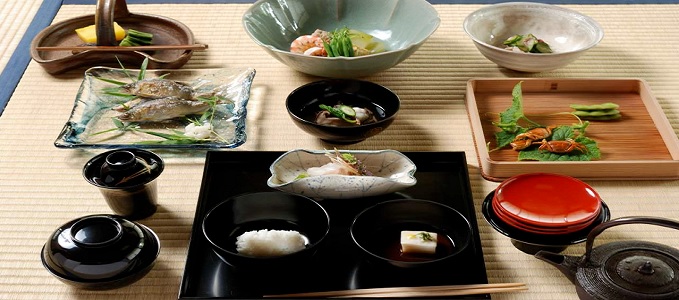
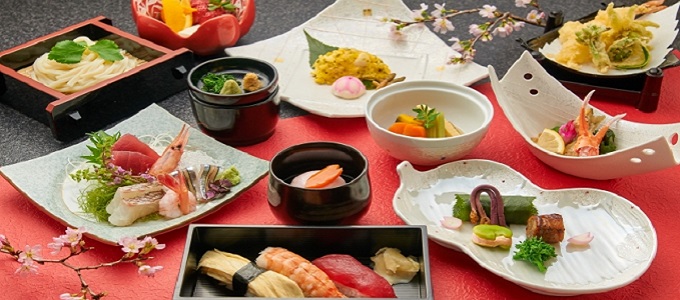
Kaiseki-ryori(会席料理) was also called Haiseki-ryori in the past. Haiseki means a seat for Haikai, ryori means a dish. The start of it was Haiseki party held by Saimu Yamamoto at Myomanji temple of Kyoto in 1629. He served some dishes and alcoholic drinks for guest after presenting his 100 linked verses(Haikai).
That came to broken year by year. The number of linked verse decerase to 36, some prople enjoyed dishes and alcoholic drinks before preseing linked verses from 1673 to 1681. After that, Haiseki-ryori became Kaiseki-ryori as dishes for drinking party. The first Kaiseki-ryori restaurant opend at Fukagawa Hachiman area of Tokyo in 1771. Kaiseki-ryori restaurants opend one after another, and they developed and offered many new dishes of Kaiseki-ryori.

Nowadays, Kaiseki-ryori is a high class Japanese full-course meal. Not many Japanese often eat it because not only dishes are westernized in Japan but also Kaiseki-ryori is a little expensive. The menu of Kaiseki-ryori is not rigorous than Cha-Kaiseki. Generally speaking, the start of it is side dish for alcoholic drinks called Sakiduke. The next menu is soup, raw fish, roasted fish or meat, boiled vegetables, rice and confectionery.
- 1.Sakiduke:
- delicacies for alcoholic drinks
- 2.Wanmono:
- clear soup with some ingredients to refresh one's taste
- 3.Mukozuke:
- raw fish or vinegared fish sandwiched between sheets of kelp
- 4.Yakimono:
- roasted fish or shrimp or meat
- 5.Sunomono:
- vinegared vegetables and fish
- 6.Takiawase:
- boiled dish, vegetables, masrooms, tofu(bean curd) and fish or meat
- 7.Mushimono:
- a cup steamed egg custard containg
- 8.Agemono:
- fried vegetable, shrimp and fish
- 9.Shime:
- rice or sushi, miso soup and pickles
- 10.Mizumono:
- dessert, fruit or sweets
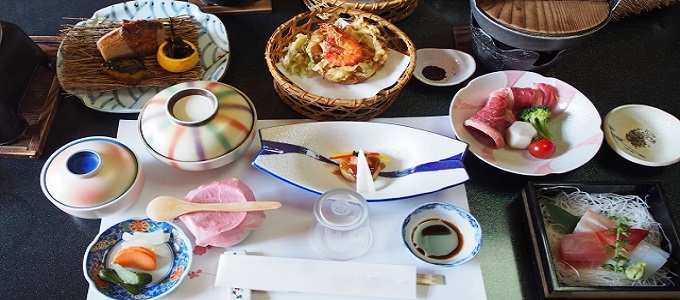
Above menu is similar to Cha-kaiseki's menu, but the order of them and some menu are different. The first dish of Cha-kaiseki is rice because its origin is that Zen Buddhist was hungry. On the other hand, the first dish of Kaiseki-ryori is delicacies for alcoholic drinks because it is cuisine for drinking party. Of couse, it varies by resutaurants and course though above menu is standard.
There are many restaurants to eat Kaiseki-ryori in Japan, not only Ryotei and Kappo but also hotel and Japanese-style hotel called Ryokan. Ryotei is an exclusive Japanese restaurant. It serves Kaiseki-ryori in a Japanese style reception room with straw mat called tatami on the floor. Kappo serves it in a counter table. Some Kappo restaurants serve not only full course meal but also individual dishes(à la carte).
If you travel Japan, you can experience Japanese culture through Kaiseki-ryori. Note that a reservation is necessary for Ryotei and Kappo restaurants.
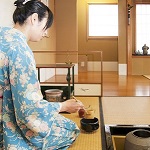 Cha-kaiseki
Cha-kaiseki Kaiseki-ryori
Kaiseki-ryori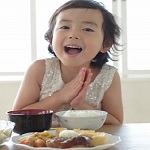 Shojin-ryori
Shojin-ryori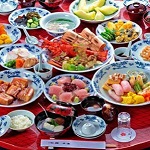 Shippoku-ryori
Shippoku-ryori